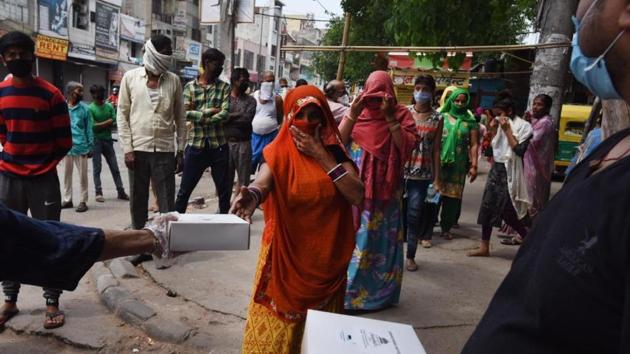‘Arrest virus, revive economy’: PM Modi has a double-barrel lockdown exit plan
PM Modi told the country to treat the next one week as an agni pariksha and asked people to strictly abide by the Covid-19 lockdown restrictions
Prime Minister Narendra Modi’s announcement on the national lockdown was driven by the assessment of states that they were not ready or prepared to exit the Covid-19 lockdown, people familiar with the development said. PM Modi also accounted for the fact that except for some pockets, the states had not been able to hit the brakes on the spread of the disease. It is for this reason, they said, PM Modi invoked the shared responsibility with the state as health and law and order are state subjects.

PM Modi extended the lockdown to May 3 but made it clear to people and the states that they should start work on a calibrated revival of the economy after the April 20 review. The prime minister called the next week an agni pariksha, a trial by fire, and nudged states to carry out a granular assessment of neighbourhoods to identify localities that had been free of the disease and allow some essential activities.
Government functionaries who have been part of the consultations at the Prime Minister’s Office said the extension of the lockdown to 3 May and a April 20 review for some areas was part of the prime minister’s double-barreled response to arrest the spread of the virus and revive the economy.
“The strength of the problem (virus) is the spread of the problem. We have to hunt it down from states and districts right down to towns and villages. At a time when the virus is making a comeback in China, India cannot afford to fritter away its gains…. We are in the middle of a war,” a senior minister told Hindustan Times.
In this blueprint, a senior government official said, April 20 will be an important date. It is designed to give the government at the Centre and the states time to rapidly ramp up the hospital and health infrastructure before taking the steps that could lead to the first green shoots of economic recovery.
“In this interregnum, the testing committee under Environment Secretary CK Mishra has been strengthened with induction of two additional secretary-rank officers from the PMO, Bharat Lal and Debashree Mukherjee, so that testing for virus infection is taken to a different level. The fourth aspect to be completed is the accelerated deployment of the Aarogya mobile application so that a bridge is formed between the citizens and the government,” said a senior official.
The rapid testing kits that are expected to land in India by April 15 are going to be central to this strategy. These kits can be used for widespread testing in hot spots and containment zones as well as areas relatively free of the virus. It essentially looks for protective antibodies in a prick of blood and gives out test results in 30 minutes or so.,
The Indian Council of Medical Research has already placed orders for 500,000 kits. Last week, it also raised a fresh tender for 4.5 million more rapid testing kits for deliveries starting May 1.
The consignment from China, which was originally supposed to reach India by April 5, has been delayed due to multiple reasons including international politics.
According to a government official, Beijing has instituted stricter inspections and controls after these kits failed in European countries. The other reason for delay is the return of the virus to China due to people coming in from Russia carrying the infection. So Beijing wants to keep adequate supply for itself before exporting the kits and lastly, because the product is in high demand.
While health advisors want the testing to be ramped up, the sensitivity of the test is directly linked to the population and prevalence.
“ For example, if in an area where there are more coronavirus positive cases, an individual tests negative in rapid tests, then the person may not be tested again. However, in an area with few cases, a person testing positive will be tested again. This sensitivity must be kept in mind,” said a Covid-19 committee member.
While the Centre will throw all it can at the virus to stop the disease from spreading in the country, particularly the rural areas, the period after one week will be critical as the government intends to restore the supply chains.






